The automotive landscape is evolving rapidly, especially with the rise of electric vehicles (EVs). In this article, we will compare two notable entries in the all-electric SUV segment: the Dacia Spring and the Hyundai Inster. Both vehicles aim to provide practical solutions for urban mobility while addressing environmental concerns, yet they do so with different philosophies and technical specifications.
Dacia Spring vs Hyundai Inster – Differences & prices compared
Everyday use, family trips or long-distance drives – here’s where the differences show.
Discover whether Dacia Spring or Hyundai Inster fits your lifestyle better.
Overview of the Dacia Spring
The Dacia Spring is redefined for the model year 2024, balancing affordability with essential features. As one of the most budget-friendly electric SUVs on the market, it caters to urban drivers looking for a compact and efficient vehicle.
Specifications of the Dacia Spring
- Body Type: SUV
- Engine Type: Electric
- Transmission: Automatic with Reduction Gearbox
- Drive Type: Front-Wheel Drive
- Power: 44 HP (33 kW) and 65 HP (48 kW)
- Torque: 125 Nm
- Battery Capacity: 26.8 kWh
- Electric Range: Up to 228 km
- Energy Consumption: Between 13.2 to 14.1 kWh/100 km
- Acceleration (0-100 km/h): 13.7 to 19.1 seconds
- Top Speed: 125 km/h
- Curb Weight: Between 1030 to 1050 kg
- Trunk Capacity: 308 L
- Dimensions: Length 3701 mm, Width 1583 mm, Height 1519 mm
Defining Features of the Dacia Spring
The Dacia Spring boasts a compact design that's perfect for city driving, along with a substantial electric range for its class. It emphasizes functional simplicity and accentuates user-friendliness with a spacious trunk and efficient powertrain. The Spring has swiftly garnered attention, not just for its price point but as an entry-level EV that doesn’t compromise on essential specs.
Overview of the Hyundai Inster
On the other hand, the Hyundai Inster, set to debut in 2025, aims to capture the market with its more extensive offerings and technological advancements. It is positioned slightly higher in terms of price and is designed for a diverse range of customer needs, providing a combination of performance and practicality.
Specifications of the Hyundai Inster
- Body Type: SUV
- Engine Type: Electric
- Transmission: Automatic with Reduction Gearbox
- Drive Type: Front-Wheel Drive
- Power: Ranges from 97 HP (71 kW) to 115 HP (85 kW)
- Torque: 147 Nm
- Battery Capacity: 42 to 49 kWh
- Electric Range: Between 360 to 370 km
- Energy Consumption: 14.3 to 15.1 kWh/100 km
- Acceleration (0-100 km/h): 10.6 to 11.7 seconds
- Top Speed: Up to 150 km/h
- Curb Weight: Between 1380 to 1433 kg
- Trunk Capacity: 238 to 280 L
- Dimensions: Length from 3825 to 3845 mm, Width 1610 mm, Height from 1575 to 1610 mm
Defining Features of the Hyundai Inster
The Inster stands out with a more powerful engine range and superior electric range compared to the Spring. The car's larger battery options mean it can cover more significant distances on a single charge, making it a suitable choice for longer commutes and family use. It also comes equipped with a plethora of advanced safety and tech features, appealing to tech-savvy consumers.
Comparative Analysis: Dacia Spring vs Hyundai Inster
In a direct comparison, the Dacia Spring offers remarkable value for the cost-conscious buyer, with a robust design for urban environments. However, for those who require additional performance, higher battery capacity, and more tech features, the Hyundai Inster emerges as the more compelling option. The Inster's more generous electric range and quicker acceleration cater to buyers looking for an overall enhanced driving experience.
Conclusion
Ultimately, the choice between the Dacia Spring and Hyundai Inster boils down to individual needs and preferences. The Spring excels in affordability and simplicity, while the Inster delivers enhanced performance and technology. As the electric vehicle market continues to expand, both offerings illustrate the diverse approaches to sustainable mobility in the auto industry.
Here’s where it gets real: The technical differences in detail
Costs and Efficiency:
When it comes to price and running costs, the biggest differences usually appear. This is often where you see which car fits your budget better in the long run.
Dacia Spring has a significantly advantage in terms of price – it starts at 14500 £, while the Hyundai Inster costs 20500 £. That’s a price difference of around 6000 £.
In terms of energy consumption, the advantage goes to the Dacia Spring: with 13.20 kWh per 100 km, it’s hardly perceptible more efficient than the Hyundai Inster with 14.30 kWh. That’s a difference of about 1.10 kWh.
As for range, the Hyundai Inster performs evident better – achieving up to 370 km, about 142 km more than the Dacia Spring.
Engine and Performance:
Power, torque and acceleration are the classic benchmarks for car enthusiasts – and here, some clear differences start to show.
When it comes to engine power, the Hyundai Inster has a decisively edge – offering 115 HP compared to 65 HP. That’s roughly 50 HP more horsepower.
In acceleration from 0 to 100 km/h, the Hyundai Inster is distinct quicker – completing the sprint in 10.60 s, while the Dacia Spring takes 13.70 s. That’s about 3.10 s faster.
In terms of top speed, the Hyundai Inster performs a bit better – reaching 150 km/h, while the Dacia Spring tops out at 125 km/h. The difference is around 25 km/h.
There’s also a difference in torque: Hyundai Inster pulls a bit stronger with 147 Nm compared to 125 Nm. That’s about 22 Nm difference.
Space and Everyday Use:
Whether family car or daily driver – which one offers more room, flexibility and comfort?
Both vehicles offer seating for 4 people.
In curb weight, Dacia Spring is clearly perceptible lighter – 1013 kg compared to 1380 kg. The difference is around 367 kg.
In terms of boot space, the Dacia Spring offers slight more room – 308 L compared to 280 L. That’s a difference of about 28 L.
In maximum load capacity, the Hyundai Inster performs minimal better – up to 1059 L, which is about 55 L more than the Dacia Spring.
When it comes to payload, Hyundai Inster somewhat takes the win – 357 kg compared to 302 kg. That’s a difference of about 55 kg.
Who wins the race?
The Hyundai Inster proves to be leaves the rival little chance and therefore becomes our DriveDuel Champion!
Hyundai Inster is the better all-rounder in this comparison.
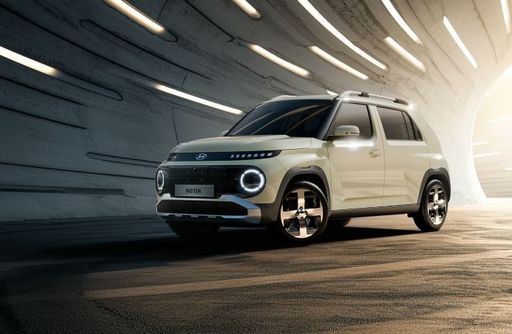 @ Hyundai Motor Company
@ Hyundai Motor Company
Hyundai Inster
Dacia Spring
The Dacia Spring stands out as an affordable and environmentally friendly option in the electric vehicle market, combining practicality with a compact design ideal for urban settings. Its minimalist interior, while basic, provides all the essential features needed for a comfortable drive, reflecting its cost-effective approach. The vehicle's performance suits city driving, making it an appealing choice for those seeking an entry-level electric car.
details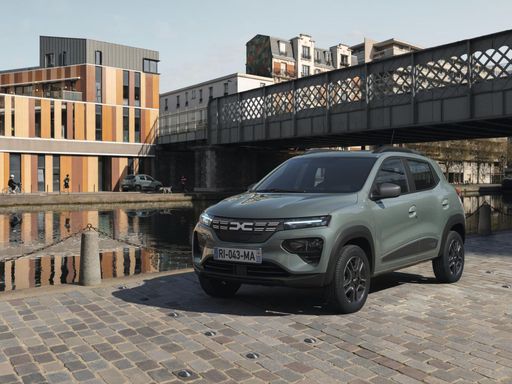 @ Dacia / Renault Group Media
@ Dacia / Renault Group Media
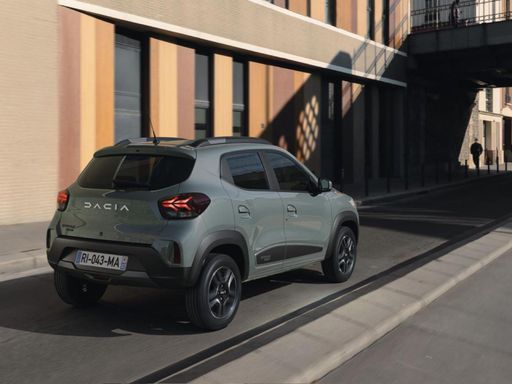 @ Dacia / Renault Group Media
@ Dacia / Renault Group Media
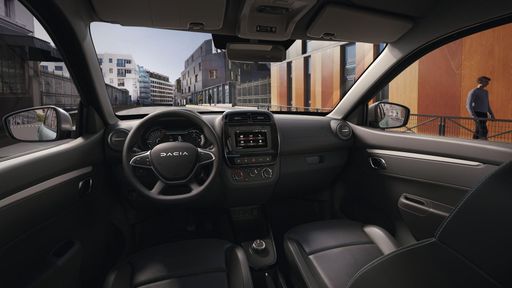 @ Dacia / Renault Group Media
@ Dacia / Renault Group Media
Hyundai Inster
The Inster has quickly captured the attention of automotive enthusiasts with its striking design and dynamic performance. This model seamlessly blends advanced technology with comfort, making it an ideal choice for both daily commutes and adventurous road trips. With its spacious interior and innovative features, the Inster promises an exhilarating driving experience that doesn’t compromise on practicality.
details @ Hyundai Motor Company
@ Hyundai Motor Company
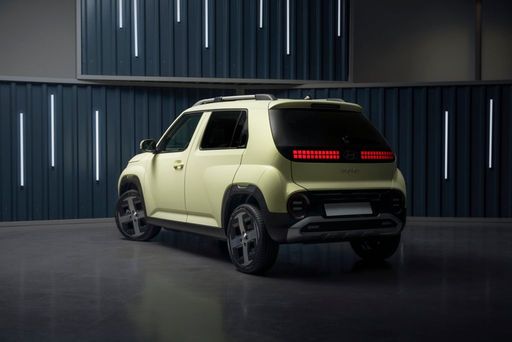 @ Hyundai Motor Company
@ Hyundai Motor Company
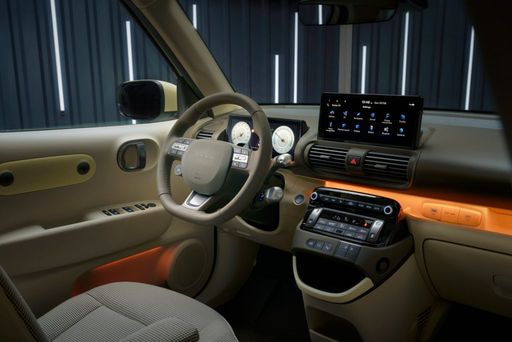 @ Hyundai Motor Company
@ Hyundai Motor Company
 @ Dacia / Renault Group Media
@ Dacia / Renault Group Media
|
 @ Hyundai Motor Company
@ Hyundai Motor Company
|
|
|
|
Costs and Consumption |
|
|---|---|
|
Price
14500 - 17100 £
|
Price
20500 - 25800 £
|
|
Consumption L/100km
-
|
Consumption L/100km
-
|
|
Consumption kWh/100km
13.2 - 14.1 kWh
|
Consumption kWh/100km
14.3 - 15.1 kWh
|
|
Electric Range
225 - 228 km
|
Electric Range
327 - 370 km
|
|
Battery Capacity
26.80 kWh
|
Battery Capacity
42 - 49 kWh
|
|
co2
0 g/km
|
co2
0 g/km
|
|
Fuel tank capacity
-
|
Fuel tank capacity
-
|
Dimensions and Body |
|
|---|---|
|
Body Type
SUV
|
Body Type
SUV
|
|
Seats
4
|
Seats
4
|
|
Doors
5
|
Doors
5
|
|
Curb weight
1013 - 1050 kg
|
Curb weight
1380 - 1433 kg
|
|
Trunk capacity
308 L
|
Trunk capacity
238 - 280 L
|
|
Length
3701 mm
|
Length
3825 - 3845 mm
|
|
Width
1583 mm
|
Width
1610 mm
|
|
Height
1519 mm
|
Height
1575 - 1610 mm
|
|
Max trunk capacity
1004 L
|
Max trunk capacity
1059 L
|
|
Payload
265 - 302 kg
|
Payload
317 - 357 kg
|
Engine and Performance |
|
|---|---|
|
Engine Type
Electric
|
Engine Type
Electric
|
|
Transmission
Automatic
|
Transmission
Automatic
|
|
Transmission Detail
Reduction Gearbox
|
Transmission Detail
Reduction Gearbox
|
|
Drive Type
Front-Wheel Drive
|
Drive Type
Front-Wheel Drive
|
|
Power HP
44 - 65 HP
|
Power HP
97 - 115 HP
|
|
Acceleration 0-100km/h
13.7 - 19.1 s
|
Acceleration 0-100km/h
10.6 - 11.7 s
|
|
Max Speed
125 km/h
|
Max Speed
140 - 150 km/h
|
|
Torque
113 - 125 Nm
|
Torque
147 Nm
|
|
Number of Cylinders
-
|
Number of Cylinders
-
|
|
Power kW
33 - 48 kW
|
Power kW
71 - 85 kW
|
|
Engine capacity
-
|
Engine capacity
-
|
General |
|
|---|---|
|
Model Year
2024
|
Model Year
2025
|
|
CO2 Efficiency Class
A
|
CO2 Efficiency Class
A
|
|
Brand
Dacia
|
Brand
Hyundai
|
What drive types are available for the Dacia Spring?
The Dacia Spring is available as Front-Wheel Drive.
The prices and data displayed are estimates based on German list prices and may vary by country. This information is not legally binding.
